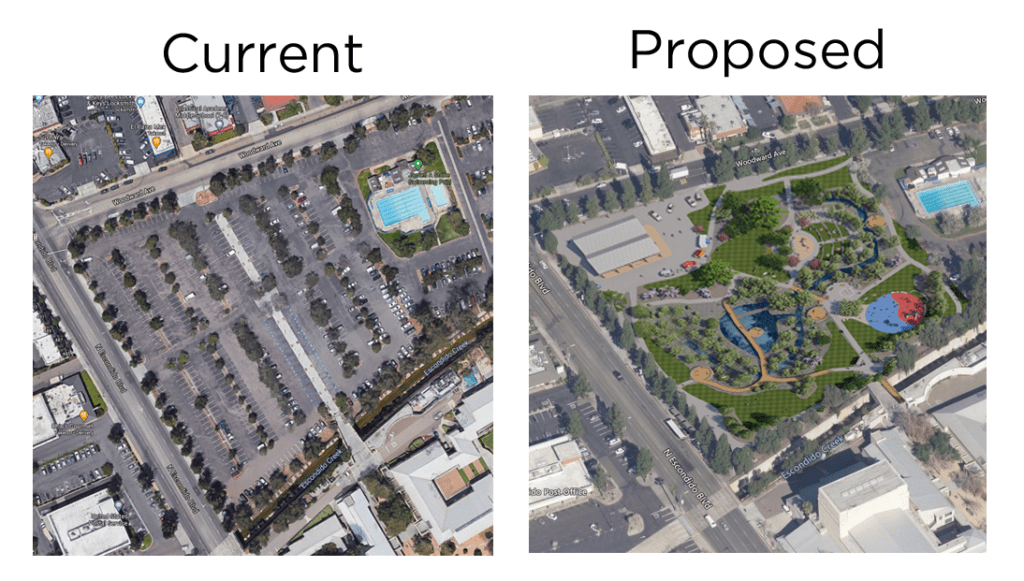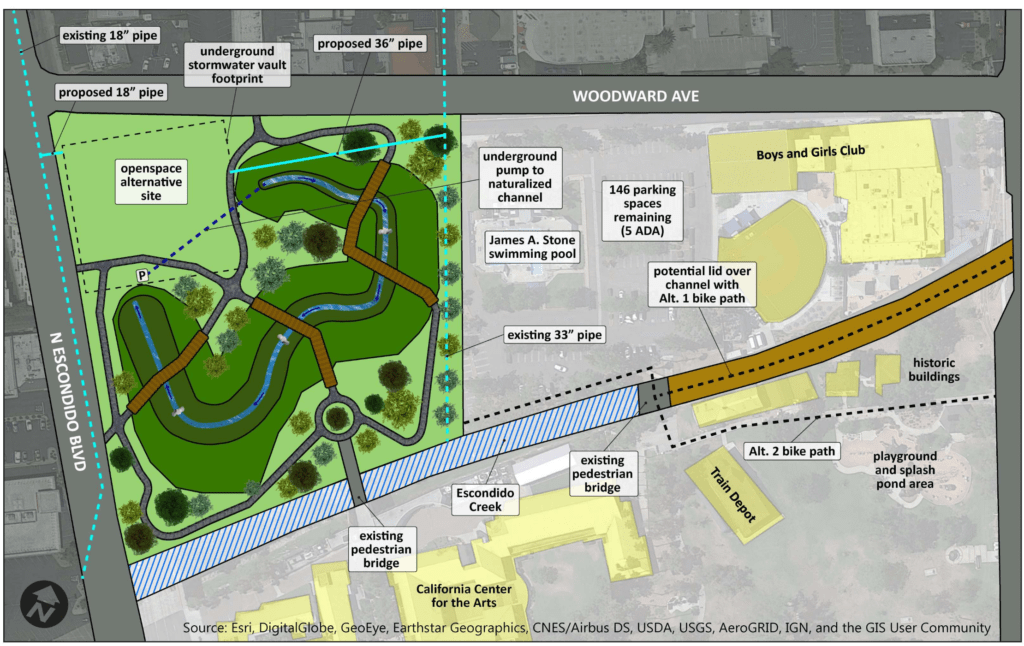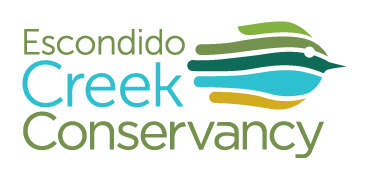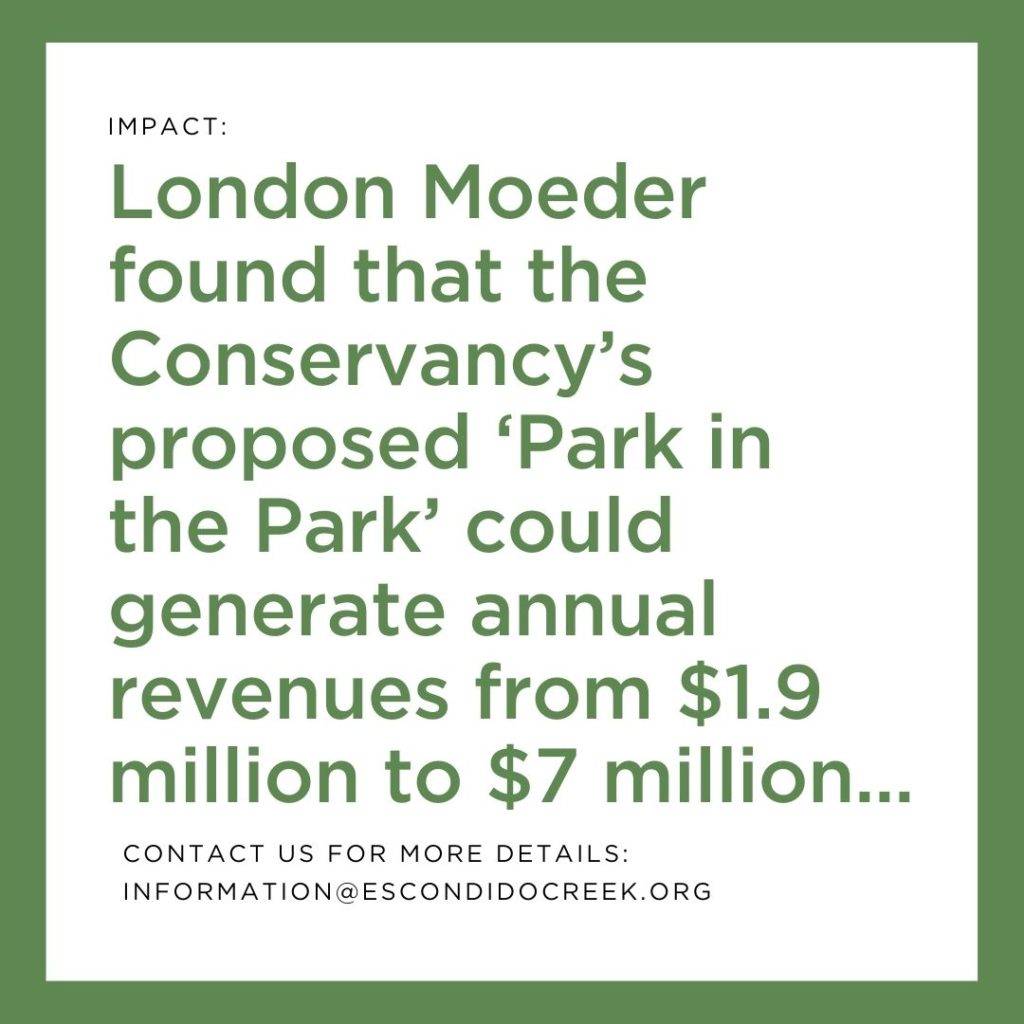
Grape Day Park
30% Design:

Not all of our work is in the wild lands. Bringing natural beauty and economic opportunity to urban areas along Escondido Creek in the city of Escondido is also important. In fact, greening Escondido improves the chances that the natural areas we protect will successfully support wildlife for decades to come. With that in mind, the Conservancy sought and won a grant of $355,000 from the State of California Integrated Regional Water Management Program to develop preliminary designs (30% design level) to restore Escondido Creek through Grape Day Park.
This goal: create an engineered design for a pilot project to illustrate how the 6+-mile concrete flood control channel could look and function if restored. The 30% design level is considered a significant engineering milestone, as it enables the larger project costs to be estimated once a design is rendered to 30%.
This work has been completed and the report can be found here. We also had a companion report created that discusses the economic benefits of parks. See that report here. Additionally, we sent a comment letter to the City of Escondido to urge the city to consider the reports as it updates the Grape Day Park Master Plan.
Grape Day Park Proposal: The Fun Details
The project was conducted in partnership with Escondido Education COMPACT and the City of Escondido. Project outcomes: increased parkland, recreational opportunities, and economic opportunities. Similar projects elsewhere have improved the quality of life and provided economic opportunities for residents. One key component of this project is an analysis to evaluate the economic benefit of a restored Escondido Creek in a more natural state. Much of the work is technical in nature, as we must first fully understand how a restored channel will function (convey flow, water quality, ecological processes, etc.) within a watershed context.
Consultants reviewed currently available studies and data, filling data gaps as needed with additional research, mapping, and data collection. Engineers and hydrologists then developed hydrologic, hydraulic, sediment transport, and geomorphic models or analytic tools, which were used to assess different design scenarios. Alternate scenarios were refined through a stakeholder process.
Unique to this project, the Conservancy partnered with Escondido Education COMPACT to implement a program of Conservation Fellowships where young people from central Escondido shadowed the project to learn STEM education methodologies from professionals working in the real world. Fellows attended technical meetings, accompanied professionals in fieldwork, and participated in project activities.
Grape Day Park Proposal: The Technical Stuff
It may seem odd for a conservation group to be promoting economic development, but the Conservancy is doing just that in its recently proposed design to create a new park along Escondido Creek within Grape Day Park. The proposed project will spark economic development while creating new green space for the enjoyment of Escondido residents and visitors. Enhancing economic development is key to kick-starting restoration of the creek in Escondido, and new development along a restored creek will provide new opportunities for people to live in a safe, vibrant, healthy, and walkable Escondido.
The design was created after review of previous plans proposed for Grape Day Park including the draft Grape Day Park Master Plan and the People to the Park Plan. It includes many people-friendly elements such as an amphitheater that could also serve as a wedding/special event venue and a boardwalk that will allow the public to meander over the water, which will be slowly moving through a newly created wetland. As the water flows through the new park, it will be cleansed of contaminants that would otherwise pollute the creek and ocean.
The Conservancy also contracted with the economic firm London Moeder to analyze the economic benefits that would occur with the proposed enhancement project. London Moeder’s analysis found that similar waterway restoration projects have had positive effects on communities throughout the nation. These projects spark economic development as the restored waterways attract residential and associated commercial development. Data show that land near dynamic parks has a greater value than land further away, as people like to live and work near parkland. London Moeder found that the Conservancy’s proposed ‘Park in the Park’ could generate annual revenues from $1.9 million to $7 million, depending on which of two zoning scenarios the City of Escondido pursued. The scenario recommended by London Moeder would involve the city building more housing around Grape Day Park than current zoning laws allow.
This would bring more people into central Escondido, providing more customers for downtown businesses, and help address San Diego County’s housing crisis.
The site of the proposed Park in the Park is currently functioning as a parking lot, and the Conservancy is committed to working with the city and community to find alternative parking areas. The Conservancy has suggested some parking alternatives.
The Conservancy is seeking input on the proposed Park in the Park project. Our consultants have created two videos to give you an overview (Video 1) and, for those a little more nerdy, (Video 2) provides more technical information.




